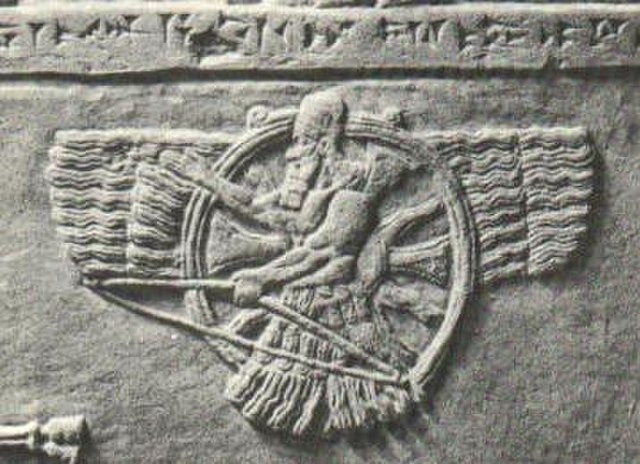Esarhaddon, also spelled Essarhaddon, Assarhaddon and Ashurhaddon was the king of the Neo-Assyrian Empire from the death of his father Sennacherib in 681 BC to his own death in 669. The third king of the Sargonid dynasty, Esarhaddon is most famous for his conquest of Egypt in 671 BC, which made his empire the largest the world had ever seen, and for his reconstruction of Babylon, which had been destroyed by his father.
Esarhaddon, closeup from his victory stele, now housed in the Pergamon Museum
The Recognition of Esarhaddon as King in Nineveh, illustration by A. C. Weatherstone for Hutchinson's History of the Nations (1915).
Relief in the Louvre depicting Esarhaddon (right) and his mother Naqiʾa (left). Possibly as a result of his distrust of his male relatives, the women of the royal family were allowed greater political influence and power during Esarhaddon's reign than in any previous period of Assyrian history.
Black basalt monument of Esarhaddon in traditional Sumero-Akkadian cuneiform, which narrates his restoration of Babylon. c. 670 BC. Exhibited at the British Museum, BM 91027.
Ashur, Ashshur, also spelled Ašur, Aššur was the national god of the Assyrians in ancient times until their gradual conversion to Christianity between the 1st and 5th centuries AD.
A Neo-Assyrian sun disk traditionally viewed to symbolize Ashur





